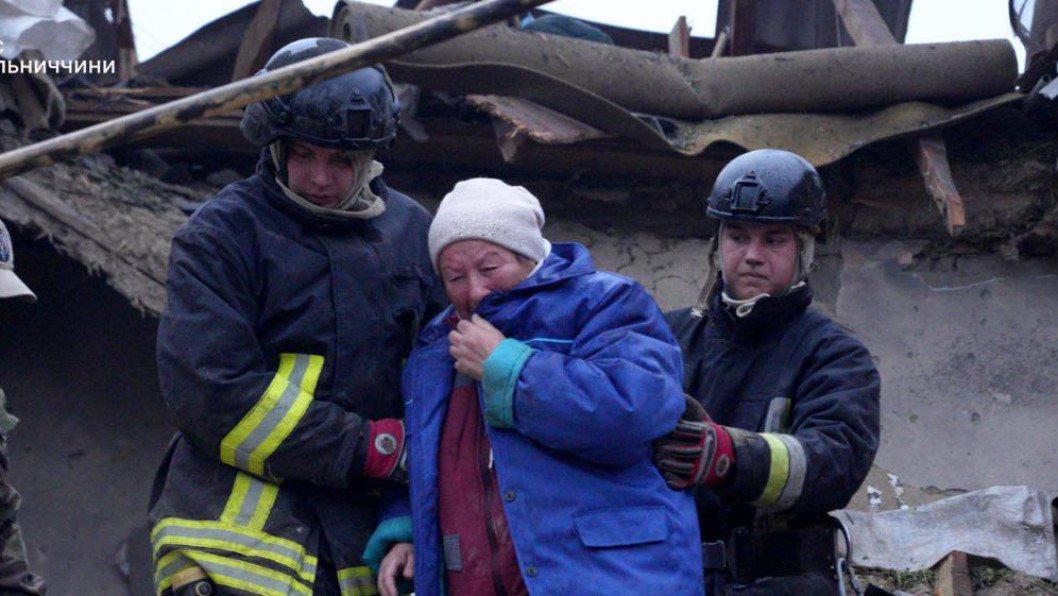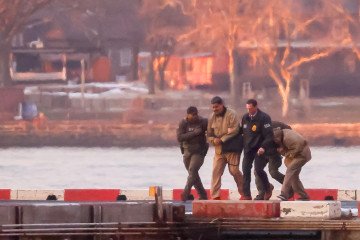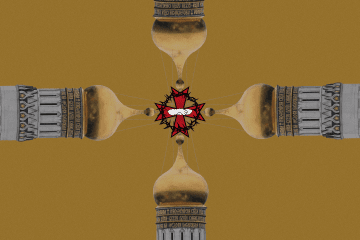- Category
- World
The Overlooked Supply Chain EU and China Maintain to Power Russia’s Deadly Iskander Missiles

Russia has unleashed hundreds of Iskander-M ballistic missiles on Ukraine, less than half have been intercepted by air defense systems. Now, Ukrainian analysts at the Economic Security Council (ESCU) warn that Russia is still quietly importing the carbon fiber crucial to building them, sourced from China and the EU, with little hindrance.
Carbon fiber—critical to Iskander-M production
Carbon fiber—is a high-performance polymer prized for its lightness, strength, and resistance to extreme temperatures. Its ability to absorb radar waves also makes it ideal for enhancing missile stealth and evading air defense systems.
Widely used in aerospace engineering, carbon fiber is critical in ballistic missile production, where it is employed to craft composite casings for solid-fuel rocket motors, turbine blades, inner engine linings, and radar-absorbing components.
Carbon fiber is indispensable to the Iskander-M missile’s solid-fuel engine, particularly in the construction of its casing and high-heat-resistant nozzles, ESCU reports. These nozzles must withstand searing temperatures of 3,000 to 4,000 Kelvin generated during fuel combustion.
“The key material to produce carbon fiber is the polyacrylonitrile (PAN) precursor, which accounts for 70% of the quality and 40% of the cost of carbon fiber,” the report says. “About 90% of carbon fibers are produced from PAN precursors.”

How carbon fiber is made
The production process begins by heating white PAN precursor fibers to extremely high temperatures in furnaces or autoclaves. The received carbon fibers are then wound onto spools using a winding machine to create precise shapes. To bind the fibers and provide structural integrity, they are coated with epoxy resin—a strong, glue-like liquid.
The fiber-resin combination is then once again shaped using interchangeable dies or pressing machines, forming it into the desired structure. After that, vacuum molding and thermoforming machines apply heat and pressure to eliminate air bubbles and ensure an even, flawless finish.
Overall, carbon fiber production is a sophisticated process that requires various raw materials, supporting components, and specialized equipment.
Rosatom, the driving force of Russia’s carbon fiber production
Russia’s needs for carbon fiber could, in theory, be met by its domestic production capabilities, according to open-source data cited in the ESCU study. The Russian military-industrial complex reportedly requires around 300 tons of carbon fiber annually.
The largest producer in Russia is the Alabuga-Volokno plant in Tatarstan, owned by the state corporation Rosatom. In 2022, the plant produced 407 tons of carbon fiber, making it the undisputed market leader in Russia.
Some reports suggest that in 2023, Rosatom enterprises doubled their carbon fiber supplies to the Russian aviation industry, reaching over 1,000 tons with a total value of 35 billion rubles.
In parallel with the expansion of carbon fibre production, Rosatom is localising the production of a key raw material, namely PAN precursor. Until 2021, 80% of Russia’s PAN precursor supplies came from the PRC. In November 2021, Umatex JSC, Rosatom’s subsidiary owning Alabuga-Volokno plant, opened an additional plant in the same area for producing PAN precursor, with an annual capacity of 5,000 tons of polyacrylonitrile fiber.
In addition to Alabuga-Volokno, Umatex owns two other carbon fiber production plants: Argon LLC in the Samara region and the Carbon and Composite Materials Plant (ZUMK) LLC in the Chelyabinsk region.
Despite domestic capability, Russia continues imports
Russia appears self-sufficient “on paper” in producing PAN precursor, the ESC report says. In 2024, Russia continued importing critical materials and equipment for carbon fiber production, including carbon fiber itself, auxiliary raw materials (like epoxy resins), and specialized equipment (vacuum formers, winding machines, and molds).
Russian companies imported at least $11.8 million worth of such goods in 2024. The largest category by volume was auxiliary raw materials—primarily epoxy resins. Russia imported over 403 tons of epoxy resins worth over $1.2 million.
China supplied the largest share, over 270 tons valued at $526,000 (about 42% of the total). Italy, specifically SIR Industriale S.p.A., was the second-largest supplier with 84 tons valued at $264,000 (21%). Germany’s Dokters International GmbH supplied resins worth over $225,000 (18%).
Russia also imported 184 tons of carbon fiber in 2024, totaling $3.2 million, which is 27% of all imported carbon fiber-related goods. Chinese companies accounted for 58% of all carbon fibre supplies.
The costliest category was equipment and components for carbon fiber production (76% of total value). Türkiye was the largest supplier, accounting for 48% or $3.5 million. China followed with 30%. Among European manufacturers, Austria led with $795,000 (11%), followed by Germany ($122,000) and Czechia ($126,000).
Russian importers linked to missile manufacturing
At least nine Russian companies that imported carbon fiber-related products in 2024 have direct or indirect links to Russia’s defense industry and Iskander-M production.
Notable examples include:
NORTEX LLC — one of the largest epoxy resin importers, bringing in $268,000 worth of Chinese resins (35% of 2024’s resin imports). In Q3 2024, NORTEX supplied 275 million rubles worth of materials to defense firms, including JSC NII Polymers, which supplies KBM (Kolomna Design Bureau) and JSC GosNII Mash. NORTEX also supplied 42 subcontractors of the Votkinsk plant based in Russia’s Republic of Udmurtia.
Nanotechnology Center for Composites LLC — imported 53 tons of Chinese carbon fiber worth $1.9 million (29% of 2024’s total carbon fiber imports). In Q3 2024, it made direct deliveries worth over 39 million rubles to the Perm-based Mashinostroitel plant, a manufacturer of solid-fuel engines for Iskander missiles. It also supplied other defense firms, including UAV and simulator producer JSC Dynamika Center for Scientific and Technical Services (82 million rubles).
Intelligent Robotic Systems LLC — imported 47 tons of carbon fiber worth $81,400 (26% of total imports). It delivered goods directly to the Votkinsk plant (64.8 million rubles) and supplied 18 contractors tied to KBM, Votkinsk, and GosNII Mash.
JSC NPO Stekloplastik — the largest Russian R&D center for fiberglass and composites. Although it specializes in fiberglass, it also produces a wide range of composites. In 2024, it imported winding machines from China’s Changchun Yingsa International Trade Co. worth $78,048. In 2023, the same company shipped over 24 machines valued at over $1 million. In Q3 2024, Stekloplastik delivered 917 million rubles worth of goods to the Perm, Votkinsk, KBM, and GosNII Mash facilities, as well as to 38 and 13 of their contractors, respectively.
Mak LLC, AL5-Yug LLC, and Ava-Trade LLC—these three companies were responsible for 63% of the mold imports for carbon fiber in 2024, bringing in $860,000 worth of Turkish-made molds. All three firms are owned by Russian national Andrey Vitalyevich Gusev. In Q3 2024, Mak supplied four contractors for the Votkinsk and GosNII Mash plants, while AL5-Yug worked with two contractors.
None of the above-mentioned Russian companies involved in the Iskander-M missile supply chain are currently subject to EU blocking sanctions.
ESCU analysts believe that if Ukraine’s partners imposed targeted sanctions as outlined in the report, it could significantly hinder Russia’s ability to produce one of its most dangerous missile systems.
-206008aed5f329e86c52788e3e423f23.jpg)

-29a1a43aba23f9bb779a1ac8b98d2121.jpeg)
-c9be02aad2c169e14ebc2a41d0ba02dc.jpg)
-605be766de04ba3d21b67fb76a76786a.jpg)
-56e0bfa71829348120777fba0ad5ba46.png)


-46f6afa2f66d31ff3df8ea1a8f5524ec.jpg)